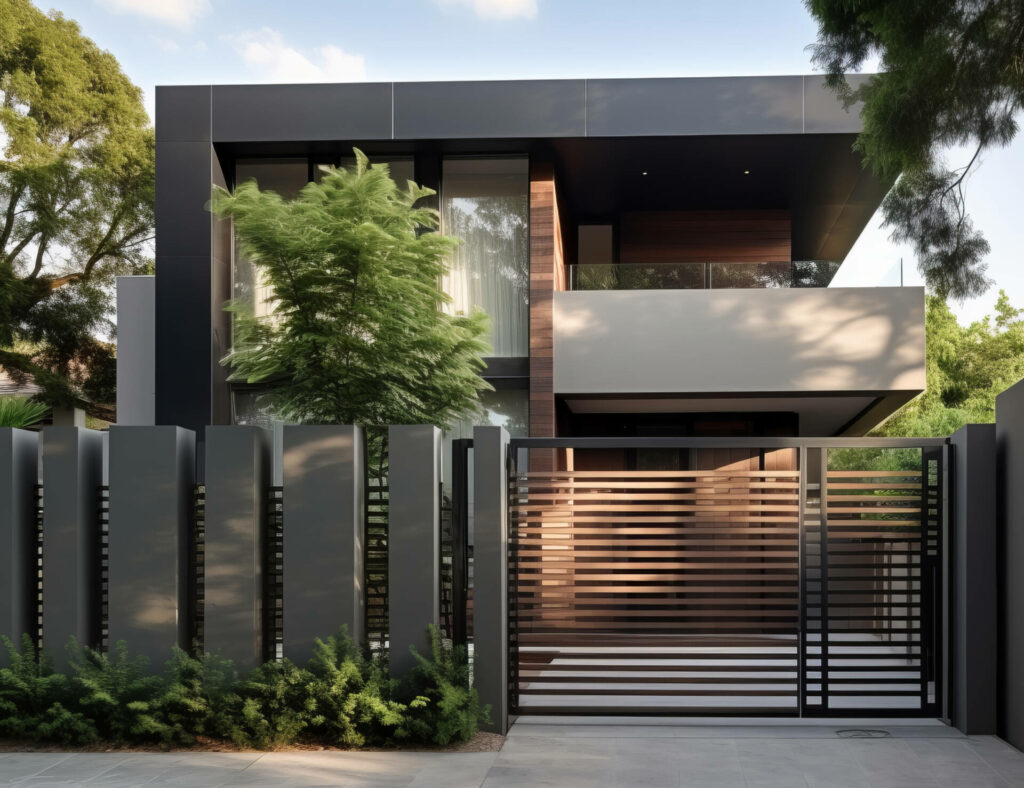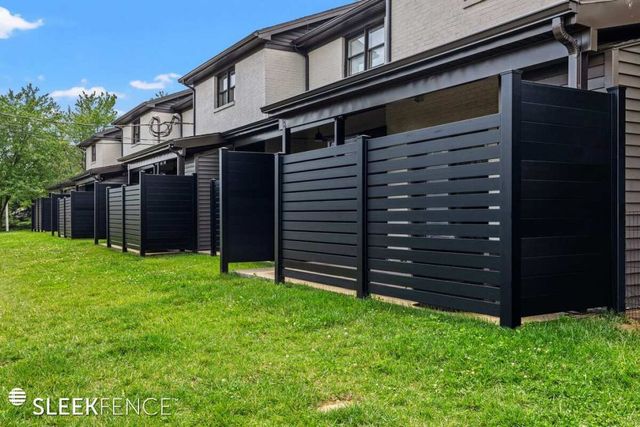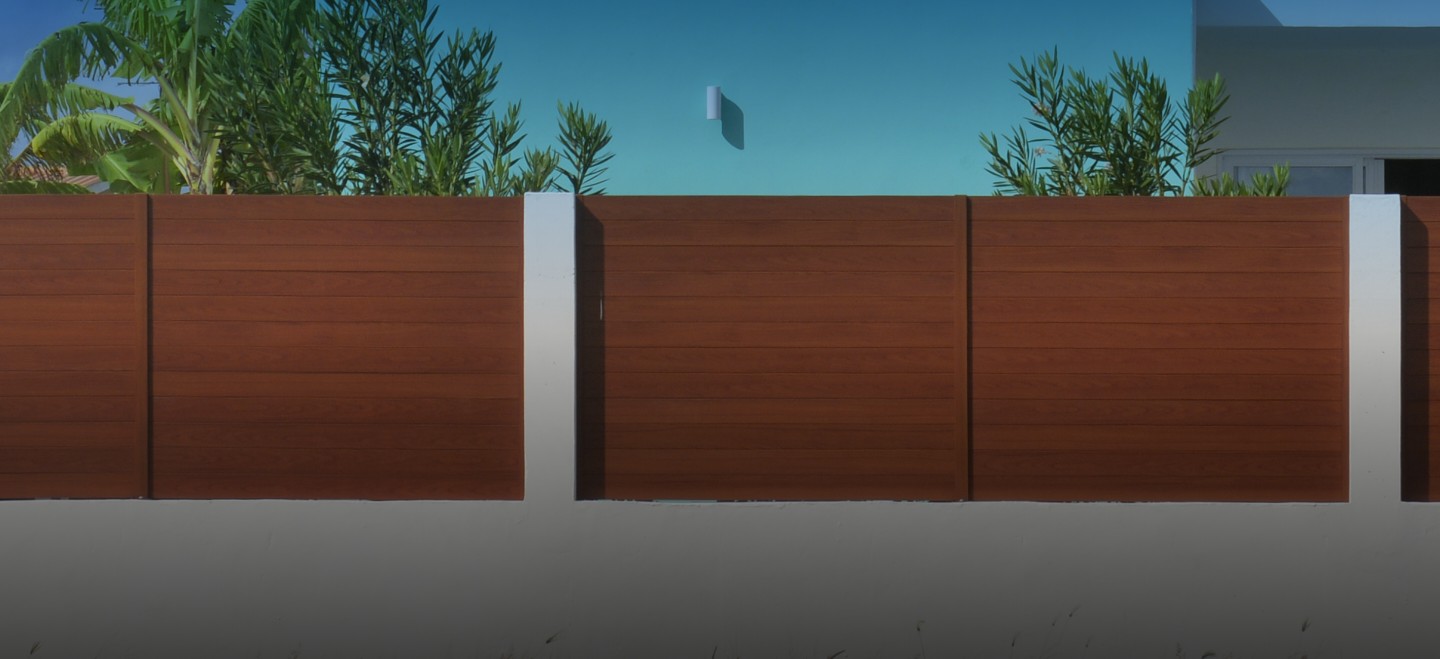All Categories
Featured
When choosing a fence for your home, it's important to consider variables like cost, longevity, maintenance, and aesthetic appeal. Three of one of the most prominent materials for commercial and property fencings are plastic, wood, and light weight aluminum. Each offers special advantages and some drawbacks, making it essential to evaluate your needs before deciding. Below, we contrast the pros and cons of these products to aid direct your selection.
Wood Secure Fencing. Pros:
![]()
All-natural Visual: Timber fences are known for their traditional, natural appearance. They can quickly mix right into most landscapes and enhance the charm of your home or organization. Whether you're going for a rustic look or a much more sleek finish, timber can be tailored with paint, tarnish, or sealer. Personalization: Timber is among the most functional materials, enabling a wide array of designs, such as picket fences, personal privacy fencings, and ranch-style units. It's very easy to change the layout to fit the certain demands of your residential property. Budget friendly: Generally, timber fences come at a lower first cost compared to vinyl or light weight aluminum, making them an economical option for those on a budget plan. Disadvantages:
Upkeep Requirements: Wood fences call for normal upkeep to preserve their beauty and capability. This includes discoloration or painting to secure against rot, termites, and climate damages. Without appropriate treatment, timber can deteriorate over time. Shorter Life-span: Contrasted to vinyl or light weight aluminum, wood fences have a tendency to have a much shorter life-span, particularly in areas with severe weather condition. Severe conditions, such as hefty rainfall, moisture, or snow, can create timber to degrade quicker. Prone to Damages: Timber fencings are prone to harm from pests, including termites, as well as all-natural wear from weather. They might additionally warp or fracture if not properly preserved. Vinyl Fencing. Pros:
Reduced Upkeep: Among the primary advantages of plastic fences is that they call for marginal maintenance. Unlike timber, vinyl doesn't require to be repainted, secured, or discolored. It's resistant to fading, discoloration, and splitting, which conserves money and time on maintenance. Longevity: Plastic is known for its capability to endure severe climate condition without wearing away. It's unsusceptible pests like termites, and its resistance to dampness and UV rays guarantees it stays looking great for many years. Lasting: A plastic fence can last approximately 30 years or more, making it an excellent lasting financial investment. Numerous makers offer service warranties, further improving its worth. Selection of Styles: Plastic fencings are readily available in various shades and styles, consisting of those that resemble wood. You can select from personal privacy, picket, or decorative designs, supplying adaptability to match your home or service. Disadvantages:
![]()
Higher Upfront Price: Plastic fencings tend to have a greater preliminary expense than timber. While the long-term financial savings on upkeep are substantial, the ahead of time financial investment may be a deterrent for some home owners. Limited Personalization: Plastic fencings come in standard styles, and while styles and shades are different, you may not have as much adaptability for customization contrasted to timber. Splitting in Cold Climates: While vinyl is durable, in exceptionally chilly climates, it can end up being brittle and fracture upon influence, which can be troublesome in areas with rough wintertimes. Light weight aluminum Fencing. Pros:
Reduced Maintenance: Light weight aluminum fencings are recognized for their low-maintenance needs. Unlike wood, light weight aluminum does not rust or corrode, and it does not need to be painted or secured. This makes it an excellent option for those that desire a hassle-free alternative. Sturdiness and Toughness: Aluminum is a robust product that stands up well to harsh weather. It's an outstanding choice for coastal areas where saltwater rust is an issue, as it's resistant to corrosion. Visual Appeal: Aluminum fences provide a tidy, sophisticated appearance, usually utilized for decorative functions. They're available in various designs, consisting of decorative styles, and can include a high-end feel to your residential or commercial property. Protection: Aluminum fences are sturdy and deal terrific safety and security, specifically when mounted with locks or gates. Their tough construction provides a dependable obstacle versus unwanted entrance. Disadvantages:
![]()
Higher First Cost: Light weight aluminum fences have a tendency to be a lot more pricey than timber, specifically if you choose for attractive styles. The upfront expense may be expensive for some. Less Privacy: Aluminum fencings generally have wider gaps between the slats, which means they give much less privacy than wood or plastic fencings. Light weight aluminum may not be the ideal choice if seclusion is a priority. Denting Concerns: While light weight aluminum is rust-resistant, it is vulnerable to flexing or denting if struck with pressure. A car crash or heavy influence can trigger lasting damage to the fencing. Which Fencing Material is Right for You? Choosing the appropriate fence depends on several variables, including your budget plan, design choices, upkeep capacity, and the environment in which you live. If you desire an all-natural appearance and are planned for regular upkeep, wood may be the right option. If low-maintenance and long life are your concerns, plastic is a wonderful choice. For those who like a streamlined, contemporary look with marginal treatment, aluminum supplies a lasting, protected service.
Ultimately, each secure fencing material has its disadvantages and pros, so it is very important to assess what matters most for your certain requirements. Consider the environment, the level of privacy you need, and just how much maintenance you're eager to devote to, and you'll locate the excellent fence for your residential or commercial property.
Wood Secure Fencing. Pros:

All-natural Visual: Timber fences are known for their traditional, natural appearance. They can quickly mix right into most landscapes and enhance the charm of your home or organization. Whether you're going for a rustic look or a much more sleek finish, timber can be tailored with paint, tarnish, or sealer. Personalization: Timber is among the most functional materials, enabling a wide array of designs, such as picket fences, personal privacy fencings, and ranch-style units. It's very easy to change the layout to fit the certain demands of your residential property. Budget friendly: Generally, timber fences come at a lower first cost compared to vinyl or light weight aluminum, making them an economical option for those on a budget plan. Disadvantages:
Upkeep Requirements: Wood fences call for normal upkeep to preserve their beauty and capability. This includes discoloration or painting to secure against rot, termites, and climate damages. Without appropriate treatment, timber can deteriorate over time. Shorter Life-span: Contrasted to vinyl or light weight aluminum, wood fences have a tendency to have a much shorter life-span, particularly in areas with severe weather condition. Severe conditions, such as hefty rainfall, moisture, or snow, can create timber to degrade quicker. Prone to Damages: Timber fencings are prone to harm from pests, including termites, as well as all-natural wear from weather. They might additionally warp or fracture if not properly preserved. Vinyl Fencing. Pros:
Reduced Upkeep: Among the primary advantages of plastic fences is that they call for marginal maintenance. Unlike timber, vinyl doesn't require to be repainted, secured, or discolored. It's resistant to fading, discoloration, and splitting, which conserves money and time on maintenance. Longevity: Plastic is known for its capability to endure severe climate condition without wearing away. It's unsusceptible pests like termites, and its resistance to dampness and UV rays guarantees it stays looking great for many years. Lasting: A plastic fence can last approximately 30 years or more, making it an excellent lasting financial investment. Numerous makers offer service warranties, further improving its worth. Selection of Styles: Plastic fencings are readily available in various shades and styles, consisting of those that resemble wood. You can select from personal privacy, picket, or decorative designs, supplying adaptability to match your home or service. Disadvantages:

Higher Upfront Price: Plastic fencings tend to have a greater preliminary expense than timber. While the long-term financial savings on upkeep are substantial, the ahead of time financial investment may be a deterrent for some home owners. Limited Personalization: Plastic fencings come in standard styles, and while styles and shades are different, you may not have as much adaptability for customization contrasted to timber. Splitting in Cold Climates: While vinyl is durable, in exceptionally chilly climates, it can end up being brittle and fracture upon influence, which can be troublesome in areas with rough wintertimes. Light weight aluminum Fencing. Pros:
Reduced Maintenance: Light weight aluminum fencings are recognized for their low-maintenance needs. Unlike wood, light weight aluminum does not rust or corrode, and it does not need to be painted or secured. This makes it an excellent option for those that desire a hassle-free alternative. Sturdiness and Toughness: Aluminum is a robust product that stands up well to harsh weather. It's an outstanding choice for coastal areas where saltwater rust is an issue, as it's resistant to corrosion. Visual Appeal: Aluminum fences provide a tidy, sophisticated appearance, usually utilized for decorative functions. They're available in various designs, consisting of decorative styles, and can include a high-end feel to your residential or commercial property. Protection: Aluminum fences are sturdy and deal terrific safety and security, specifically when mounted with locks or gates. Their tough construction provides a dependable obstacle versus unwanted entrance. Disadvantages:

Higher First Cost: Light weight aluminum fences have a tendency to be a lot more pricey than timber, specifically if you choose for attractive styles. The upfront expense may be expensive for some. Less Privacy: Aluminum fencings generally have wider gaps between the slats, which means they give much less privacy than wood or plastic fencings. Light weight aluminum may not be the ideal choice if seclusion is a priority. Denting Concerns: While light weight aluminum is rust-resistant, it is vulnerable to flexing or denting if struck with pressure. A car crash or heavy influence can trigger lasting damage to the fencing. Which Fencing Material is Right for You? Choosing the appropriate fence depends on several variables, including your budget plan, design choices, upkeep capacity, and the environment in which you live. If you desire an all-natural appearance and are planned for regular upkeep, wood may be the right option. If low-maintenance and long life are your concerns, plastic is a wonderful choice. For those who like a streamlined, contemporary look with marginal treatment, aluminum supplies a lasting, protected service.
Ultimately, each secure fencing material has its disadvantages and pros, so it is very important to assess what matters most for your certain requirements. Consider the environment, the level of privacy you need, and just how much maintenance you're eager to devote to, and you'll locate the excellent fence for your residential or commercial property.
Latest Posts
Recognizing Roofing Warranties: What Homeowners Must Know
Published May 20, 25
1 min read
Enjoy the Flavors of Yesterday's Tavern
Published May 19, 25
1 min read
Discover Top Vision Solutions in Panama City, FL – Eye Center South Specialists
Published May 18, 25
1 min read